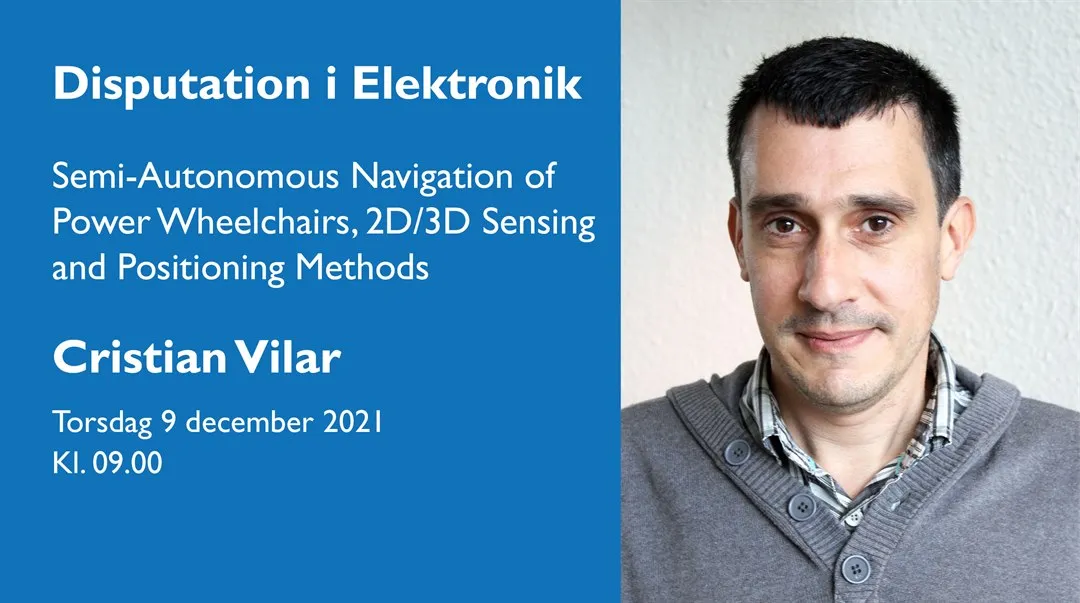Disputation i Elektronik med Cristian Vilar
Den 9 december presenterar Cristian Vilar sin doktorsavhandling " Semi-Autonomous Navigation of Power Wheelchairs, 2D/3D Sensing and Positioning Methods ". Välkommen att delta på plats eller digitalt. Seminariet ges på engelska.
Huvudhandledare: Professor Mattias O’Nils
Opponent: Dr. Nicolas Ragot, CESI Ecole d’Ingénieurs, Rouen
Betygsnämnd:
Professor Amund Skavhaug, Norges teknisk-naturvitenskaplige universitet
Professor George Nikolakopoulos, Luleå tekniska universitet
Professor Tingting Zhang, Mittuniversitetet
Sammanfattning
Autonomous driving and assistance systems have become a reality for the automotive industry to improve driving safety in the car. Hence, the cars use a variety of sensors, cameras and image processing techniques to measure their surroundings and control their direction, braking and speed for obstacle avoidance or autonomously driving applications.
Like the automotive industry, powered wheelchairs also require safety systems to ensure their operation, especially when the user has controlling limitations, but also to develop new applications to improve its usability. One of the applications is focused on developing a new contactless control of a powered wheelchair using the position of a caregiver beside it as a control reference. Contactless control can prevent control errors, but it can also provide better and more equal communication between the wheelchair user and the caregiver.
This thesis evaluates the camera requirements for a contactless powered wheelchair control and the 2D/3D image processing techniques for caregiver recognition and position measurement beside the powered wheelchair.
The research evaluates the strength and limitations of different depth camera technologies for caregiver feet detection above the ground plane to select the proper camera for the application. Then, a hand-crafted 3D object descriptor is evaluated for caregiver feet recognition and compared with respect to a state-of-the-art deep learning object detector. Results for both methods are good, however, the hand-crafted descriptor suffers from segmentation errors and consequently, their accuracy is lower. After the depth camera and image processing techniques evaluation, results show that it is possible to use only an RGB camera to recognize and measure his or her relative position.
